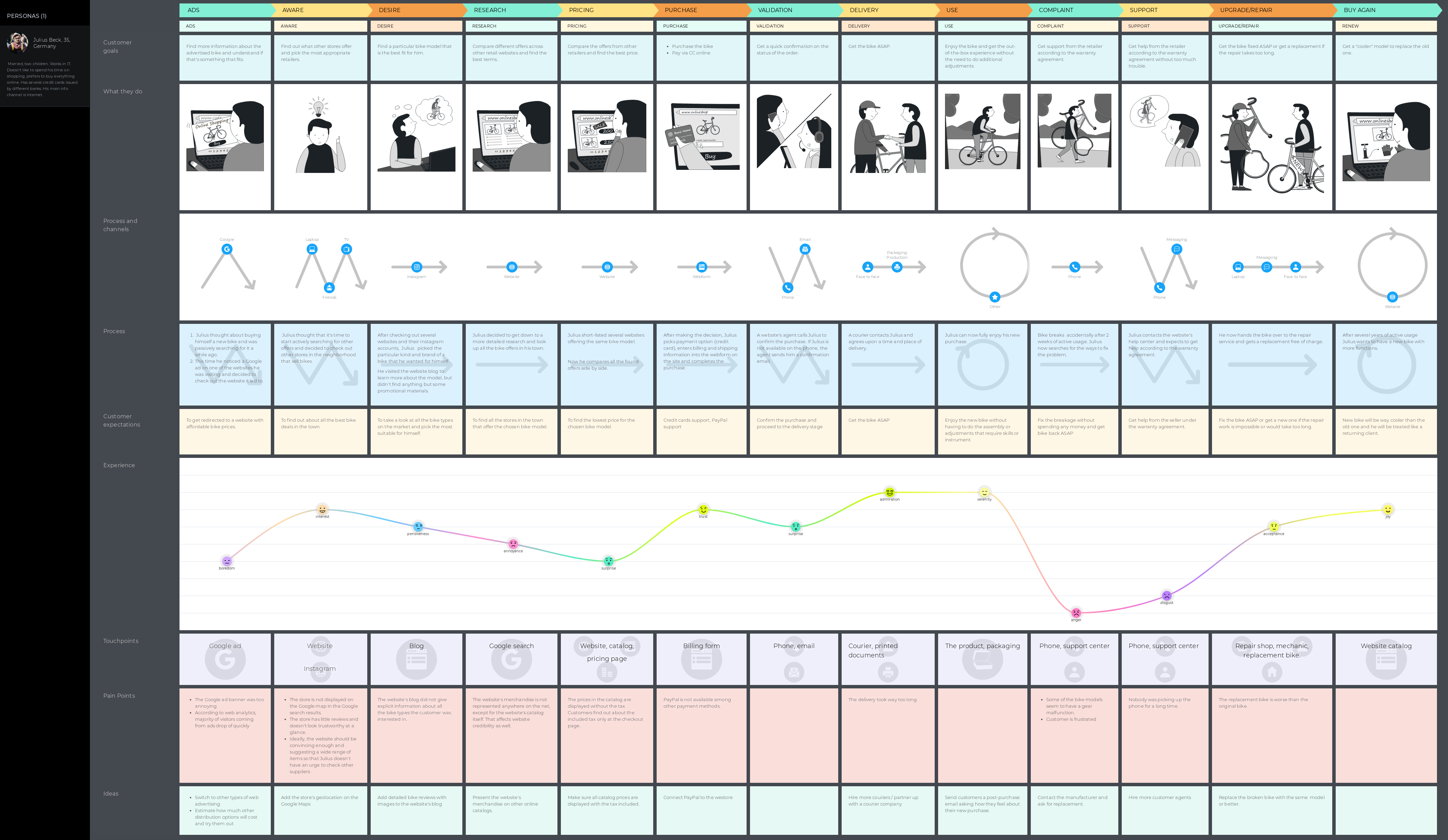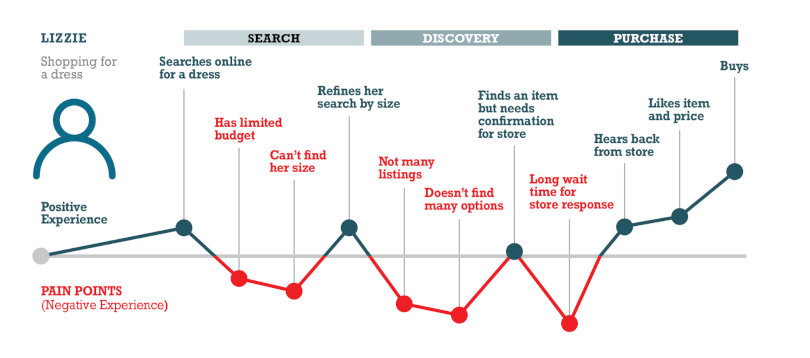The e-commerce market is growing rapidly, partially thanks to the COVID-19 pandemic that made people switch to offline shopping. Global e-commerce sales amounted to $4.28 trillion in 2020 and may grow to $5.4 trillion in 2021, according to Statista. Seeking to bite off a piece of this pie, new websites appear every day, increasing competition in the market. So how can you survive among a huge number of players and achieve success?
Some market participants rely on unique content, others — on design and usability, but all their efforts will come to naught without satisfied users. Any negative experience connected with your website will bring your potential customer to your competitors before they add anything to the cart. Besides, no one guarantees that customers will stay with you if they have a negative post-purchase experience.

Therefore, you should not only make a beautiful, user-friendly website but also attract, retain users, and deliver a great user experience to them. But how to do that? Journey mapping is your go-to that will help you look into the minds of your customers and understand their needs and expectations from your e-commerce website.
What is a journey map?
A customer journey map visualizes a client’s way towards achieving their goals and their interactions with a product, service, or company at all touchpoints and through all channels.
There is the simplest example of the customer journey:
- Let’s assume that a 30-year-old developer Ben wanted to buy a camera.
- He searched the web for the most popular cameras, read the reviews, chose the model, and looked for the best price.
- He found the camera in your online store.
- Finally, Ben bought it.
But the customer journey usually doesn’t end with a purchase. It also includes other stages: delivery, using the product, feedback, receiving your newsletters informing the customers about new discounts or inviting them to make a new purchase, etc. This example can be continued:
- Ben used his camera.
- He left feedback.
- He recommended your online store to his friends on social networks.
- Ben returned to the store to make new purchases.
When creating a customer journey map, you should take into account the needs, emotions, goals, expectations, thoughts, problems, and pain points that your clients have when they interact with you.
We can easily expand our example. Imagine that Ben couldn’t add an item to the cart and had to get in touch with the store manager. Or he received a wrong model and had to contact the delivery service and ask them to replace it. Or the camera broke down after the first use and Ben had to contact the support service. All of these actions can be reflected on the map that describes the entire user experience with your website and may look like this:

Building a customer journey map will allow you to understand the real experience of your customers, identify the weak points, and make the necessary improvements and changes to enhance customer experience, increase their satisfaction with the product and earn their loyalty. Therefore, your map should be based on actual data rather than on your assumptions.
For this purpose, you should identify your target audience and collect as much data as possible about your clients. All this information will allow you to create buyer personas, behind which will be real people and their expectations and needs. Don’t think out their desires for them, let them speak for themselves.
If you don’t know how to build your map from scratch, you can use various instruments, such as Paint or Google Spreadsheets. Besides, there are specialized tools like UXPressia that offer you convenient and easy-to-use customer journey map templates.
How can journey mapping help your e-commerce business?
Let’s take a look at how your business will benefit from creating a customer journey map.
1. Identifying touchpoints
Building a map will help you clearly understand when your customers directly or indirectly come into contact with your brand. If you don’t know these touchpoints and don’t see what happens with users at every touchpoint, you won’t be able to fully understand their experience. As a result, you overlook the existing problems with experience at these touchpoints and won’t be able to fix them. What’s more, you will have no idea what’s wrong and why you couldn’t meet your customers’ expectations.
When you see the whole picture, you will be able to improve the experience at those touchpoints that you can control (e.g. your website). Your team members often don’t know what is happening on the user’s side. They are responsible for their tasks and keep track of their metrics. The designer develops the interface, the marketer comes up with ways to attract buyers to the website, copywriters try to provide the necessary content, and so on. They have a clue what users are doing on the website and try to make their experience positive.
However, they don’t know what happens before the user comes to the website or what happens after they leave it. Customers could face barriers like poor delivery and would no longer come to your marketplace despite the best efforts of marketers and designers. You may think that users chose your competitor because of their big discounts, but the problem is different. The map allows you to look at the user’s experience from the outside, as well as find and fix pain points (e.g., change the delivery service from the above-mentioned example).
2. Determining whether your customers achieve their goals
Your customer’s journey begins before they enter your online store. You need to analyze all the stages of their journey and interactions with the product to understand whether they achieve their goals at each stage. At every stage of the journey, there can be roadblocks that prevent customers from achieving these goals. Your task is to identify and address these problems.
Take the data you’ve gathered and measure it against how easily your customers can get done what they need to do. Ask yourself the following types of questions:
- Were there any roadblocks?
- Why do tons of people abandon their carts on the checkout page?
- Why do users go to our opt-in download page but not fill out the form?
You can use two reports in Google Analytics to track the users’ actions and see what actions they have performed and what they didn’t at each stage:
- Behavior Flow report that demonstrates how users move around the web pages and reveal the content problems;
- Goal flow report that shows how users navigate the website and what actions they perform.
If you see that users can’t reach their goals for any reason, try searching for pain points. Let’s find out what it is in the next section.
3. Defining and removing pain points
Baymard Institute revealed that almost 70% of buyers leave products in the shopping cart of an online store without placing an order. Why is this happening? There may be a lot of reasons. For example, a user cannot add a certain number of products to the cart, the website doesn’t provide information about delivery costs, a registration form is too long, and many others.
Let’s assume that 24-year-old trainee Lizzie is going to her first corporate party and looking for a dress. Her friend advises her to visit one website, where she finds a few models she likes. However, she can’t afford to buy them due to her limited budget. Lizzie looks through the range of products again and finds several dresses at a price that suits her. But the website doesn’t display the sizes. She searches by size and finds that there are very few dresses in her size on the platform. Finally, she manages to find a dress that suits her both in size and price. To add a dress to the cart, Lizzie needs to fill out the registration form. It upsets her because she doesn’t want to waste her time on additional actions. After registering, she receives confirmation from the store and buys the dress.

When you know the pain points, your task is to eliminate them and improve the user experience. If there are several pain points, prioritize them. Remove the most painful points in the first turn, and then start working with the rest of the barriers. In the above example, you can first solve the problem with the registration form and then add more options with price and size.
4. Decision support for design questions
So, thanks to the journey map, you’ll see how you can improve your website to increase customer loyalty and attract more users. For example, how you can work out the website’s design, the arrangement of sections and buttons, add a CTA, and so on.
Always take into account user’s goals and actions at every stage of their journey, current experience, and barriers when you’re brainstorming about which new features to add or trying to get folks excited about recently launched ones. Look at the map and provide your customers with the features that will help them achieve their goals.
Final word
The advancement of technology and the Internet has led to the emergence of new e-commerce websites, which has boosted competition. Businesses can’t attract customers with traditional advertising anymore as they did many years ago. Now they have to fight for buyers at every stage. How to do it?
There is one right decision — to get to know your consumers better, find out what influences their choice and what barriers they face when interacting with your brand. Building a customer journey map will allow you to improve your business processes and become more customer-oriented. Maps will help you better understand what your customers want from your website and what problems they face. They can give you an idea of how to remove these pitfalls and improve the user experience so that customers come to you again and again.







